Computer Science > QUESTIONS & ANSWERS > WGU C175 OBJECTIVE ASSESSMENT PRACTICE TEST ANSWERS| IT CIS111 TEST BANK (All)
WGU C175 OBJECTIVE ASSESSMENT PRACTICE TEST ANSWERS| IT CIS111 TEST BANK
Document Content and Description Below
Chapter 2: Data Modeling Multiple Choice 1. The Entity-Relationship (E-R) model is . a. a diagramming technique that describes record structures (i.e. the fields that make up the records of a ... file) b. an alternative to indexing and hashing as a means for providing direct access in files c. a diagramming technique that describes entities, their attributes, and the relationships between them d. an alternative to file design in which attributes are used instead of fields e. a diagramming technique that relates entities to each other, attributes to each other, and relationships to each other Ans: c Response: See page 20 2. An association between entities is a(n) . a. entity type b. entity occurence c. record d. attribute e. relationship Ans: e Response: See page 20 3. A binary relationship is a relationship between two . a. entity types b. attribute types c. associations d. files e. cardinalities Ans: a Response: See page 20 4. The term “binary” in binary relationship indicates that the relationship is between a. two halves of an entity type Chapter 2 Data Modeling b. two entity types c. two divisions of an entity’s attributes d. two attributes e. two relationships Ans: b Response: See page 20 5. The cardinality of a relationship is . a. The minimum number of entities that can be involved in the relationship. b. The maximum number of entities that can be involved in the relationship. c. The minimum number of attributes that can be in the entity types in a relationship. d. The maximum number of attributes that can be in the entity types in a relationship. e. The minimum number of associations that can be involved in the relationship. Ans: b Response: See page 23 6. The modality of a relationship is . a. The minimum number of entities that can be involved in the relationship. b. The maximum number of entities that can be involved in the relationship. c. The minimum number of attributes that can be in the entity types in a relationship. d. The maximum number of attributes that can be in the entity types in a relationship. e. The minimum number of associations that can be involved in the relationship. Ans: a Response: See page 24 7. A one-to-one binary relationship . a. involves a single entity type b. involves two entity types c. allows an occurrence of one entity type to be associated with several occurrences of another entity type d. allows an occurrence of one entity type to be associated with several occurrences of another entity type and vice versa e. restricts the number of attributes that an entity has Ans: b Response: See page 23 Chapter 2 Data Modeling 8. A one-to-many binary relationship allows an occurrence of the entity type on the “one side” of the relationship to be associated with . a. a single occurrence of the same entity type b. multiple occurrences of the same entity type c. a single occurrence of the entity type on the “many side” of the relationship d. multiple occurrences of the entity type on the “many side” of the relationship e. multiple occurrences of the entity type on the “one side” of the relationship Ans: d Response: See page 23 9. A many-to-many binary relationship allows an occurrence of one entity type to be associated with . a. a single occurrence of the same entity type b. multiple occurrences of the same entity type c. a single occurrence of another entity type d. multiple occurrences of another entity type e. multiple occurrences of three entity types Ans: d Response: See page 24 10. A business school’s faculty parking lot has assigned parking spaces. Each professor is entitled to one parking space. This is an example of a relationship. a. one-to-one binary b. one-to-many binary c. many-to-many binary d. one-to-one unary e. one-to-many unary Ans: a Response: See page 24 11. Each building on a university campus has several faculty offices. Each professor has one office. The relationship between campus buildings and professors is a relationship. a. one-to-one binary b. one-to-many binary c. many-to-many binary d. one-to-one unary e. one-to-many unary Ans: b Chapter 2 Data Modeling Response: See page 24 12. In a university, the relationship between courses and their sections can best be described as a relationship. a. one-to-one binary b. one-to-many binary c. many-to-many binary d. one-to-one unary e. one-to-many unary Ans: b Response: See page 24 13. In a university setting, the relationship between students and the professors who have been their instructors is a relationship. a. one-to-one binary b. one-to-many binary c. many-to-many binary d. one-to-one unary e. one-to-many unary Ans: b Response: See page 24 14. Intersection data . a. is an attribute of the entity on the “one side” of a one-to-many relationship b. is an attribute of the entity on the “many side” of a one-to-many relationship c. describes the relationship between two entities in a many-to-many relationship d. describes one of the entities in a many-to-many relationship e. describes one of the entities in a ternary relationship Ans: c Response: See page 25 15. Each student at a university takes many courses; each course is taken by many students. The semester that a student took a course and the grade that the student received in the course is called data. a. index b. key c. pointer d. direct access e. intersection Chapter 2 Data Modeling Ans: e Response: See page 25 16. An associative entity is an alternate way of expressing a(n) . a. one-to-one binary relationship b. one-to-many binary relationship c. many-to-many binary relationship d. entity that has no attributes other than the unique identifier or key e. entity that has no unique identifiers or keys Ans: c Response: See page 27 17. Depending on the attributes and circumstances present, the unique identifier of an associative entity could be any of the following, except . a. the combination of the unique identifiers of the entities in the many-to-many relationship consisting of exactly one field from each entity b. the combination of the unique identifiers of the entities in the many-to-many relationship consisting of several fields c. the combination of the unique identifiers of the entities in the many-to-many relationship plus one or more additional fields that express times or dates d. a single field that is associated with the associative entity and provides unique values e. a unique combination of fields from one of the two entities in the many-to-many relationship Ans: e Response: See page 28 18. A one-to-one unary relationship . a. involves a single entity type b. involves two entity types c. allows an occurrence of one entity type to be associated with several occurrences of another entity type d. allows an occurrence of one entity type to be associated with several occurrences of another entity type and vice versa e. allows an occurrence of one entity type to be associated with several occurrences of the same entity type Ans: a Response: See page 28 Chapter 2 Data Modeling 19. A one-to-many unary relationship allows an occurrence of the entity type on the “one side” of the relationship to be associated with . a. a single occurrence of the same entity type b. multiple occurrences of the same entity type c. a single occurrence of the different entity type on the “many side” of the relationship d. multiple occurrences of the different entity type on the “many side” of the relationship e. multiple occurrences of the different entity type on the “one side” of the relationship Ans: b Response: See page 29 20. A many-to-many unary relationship allows an occurrence of one entity type to be associated with . a. a single occurrence of the same entity type b. multiple occurrences of the same entity type c. a single occurrence of another entity type d. multiple occurrences of another entity type e. multiple occurrences of three entity types Ans: b Response: See page 29 21. A ternary relationship allows an occurrence of one entity type to be associated with . a. a single occurrence of the same entity type b. multiple occurrences of the same entity type c. a single occurrence of only one other entity type d. multiple occurrences of only one other entity type e. multiple occurrences of two other entity types Ans: e Response: See page 31 22. In a university setting, each student is paired with another student for the purpose of getting assignments and turning in work for the other if he is out of school for any reason. This is a relationship. a. one-to-one binary b. one-to-many binary c. many-to-many binary Chapter 2 Data Modeling d. one-to-one unary e. one-to-many unary Ans: d Response: See page 29 23. In a university setting, every professor reports to another professor who is the department chair. This is a relationship. a. one-to-one binary b. one-to-many binary c. many-to-many binary d. one-to-one unary e. one-to-many unary Ans: e Response: See page 29 24. A university wants to keep track of which professor taught which subject to which student. This is a relationship. a. one-to-many unary b. many-to-many unary c. one-to-many binary d. many-to-many binary e. ternary Ans: e Response: See page 31 25. A dependent entity . a. is the same as an associative entity b. can only exist as part of a many-to-many binary relationship c. can only be present if the entity it depends on is present d. requires intersection data if it is part of a many-to-many binary relationship e. requires intersection data if it is part of a ternary relationship Ans: c Response: See page 32 True/False Chapter 2 Data Modeling 1. The Entity-Relationship (E-R) model is designed to diagram entity types that are independent of each other. Ans: False Response: See Page 20 2. The Entity-Relationship (E-R) model is designed to diagram entity types and the relationships between them. Ans: True Response: See Page 20 3. A binary relationship is one in which each entity occurrence is associated with exactly two other entity occurrences. Ans: False Response: See Page 20 4. A binary relationship is a relationship between two entity types. Ans: True Response: See Page 20 5. A one-to-one binary relationship involves a single entity type. Ans: False Response: See Page 23 6. A one-to-one binary relationship associates one occurrence of an entity type with one occurrence of another entity type. Ans: True Response: See Page 23 7. The cardinality of a relationship is the maximum number of entity occurrences that can be involved in it. Ans: True Response: See Page 23 [Show More]
Last updated: 1 year ago
Preview 1 out of 12 pages
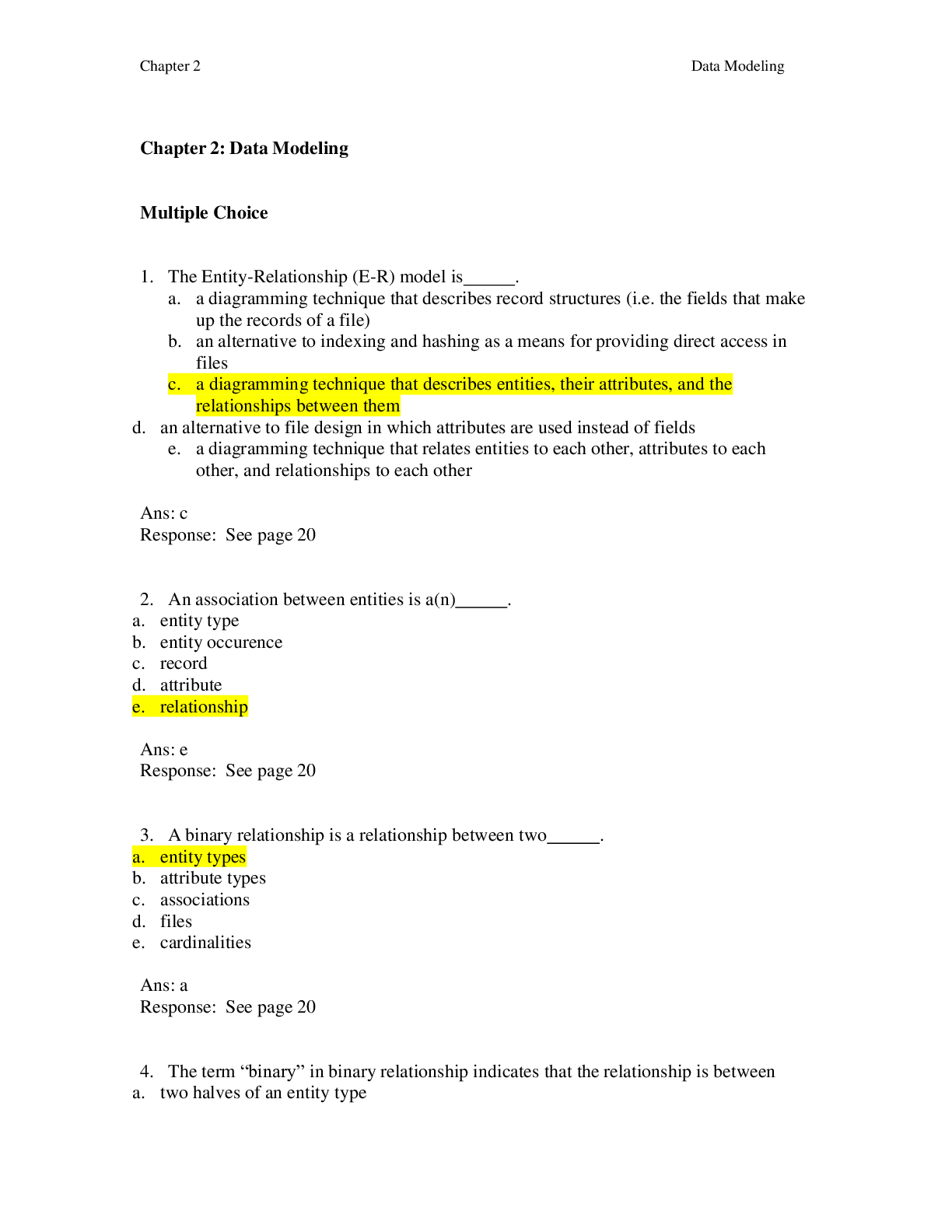
Reviews( 0 )
Document information
Connected school, study & course
About the document
Uploaded On
Sep 28, 2021
Number of pages
12
Written in
Additional information
This document has been written for:
Uploaded
Sep 28, 2021
Downloads
0
Views
68


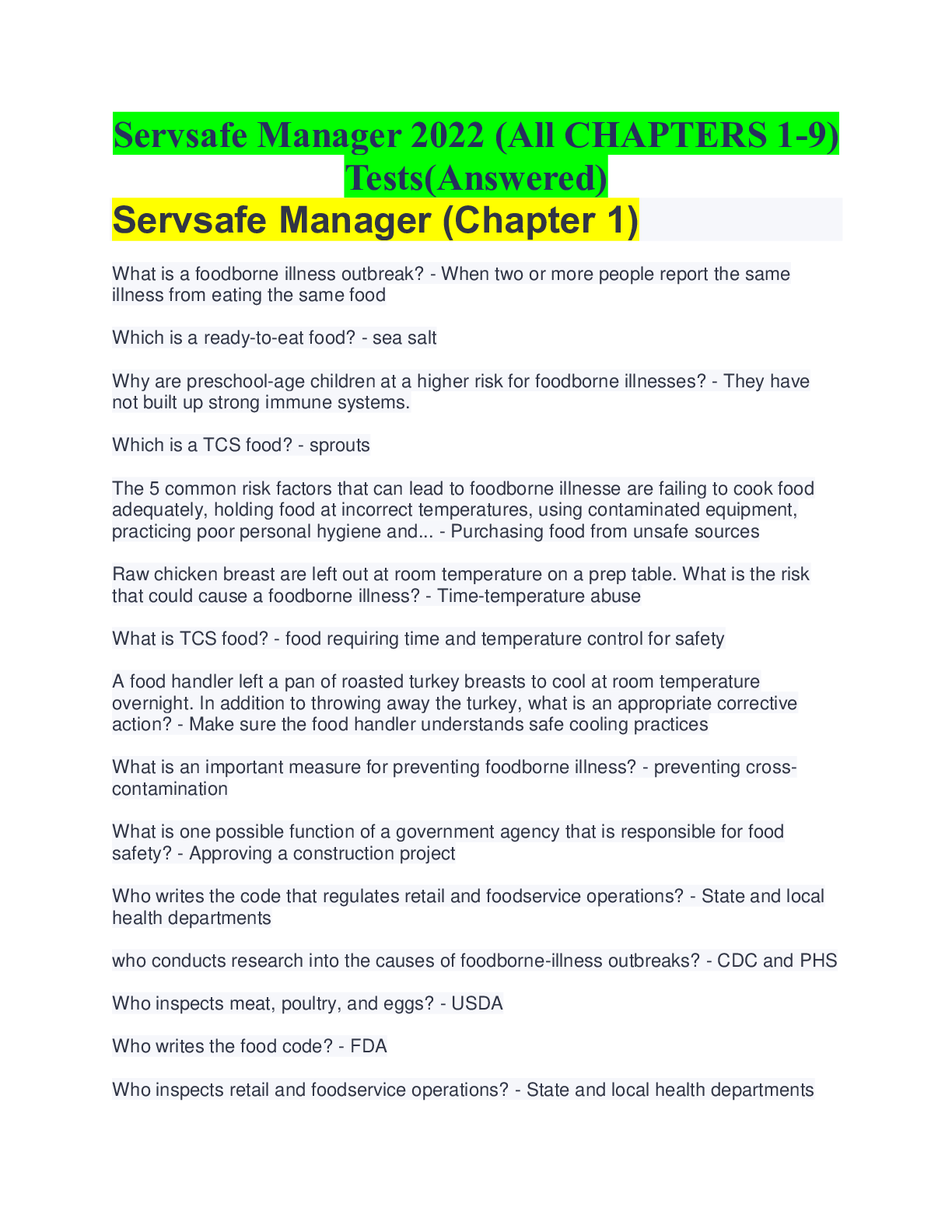
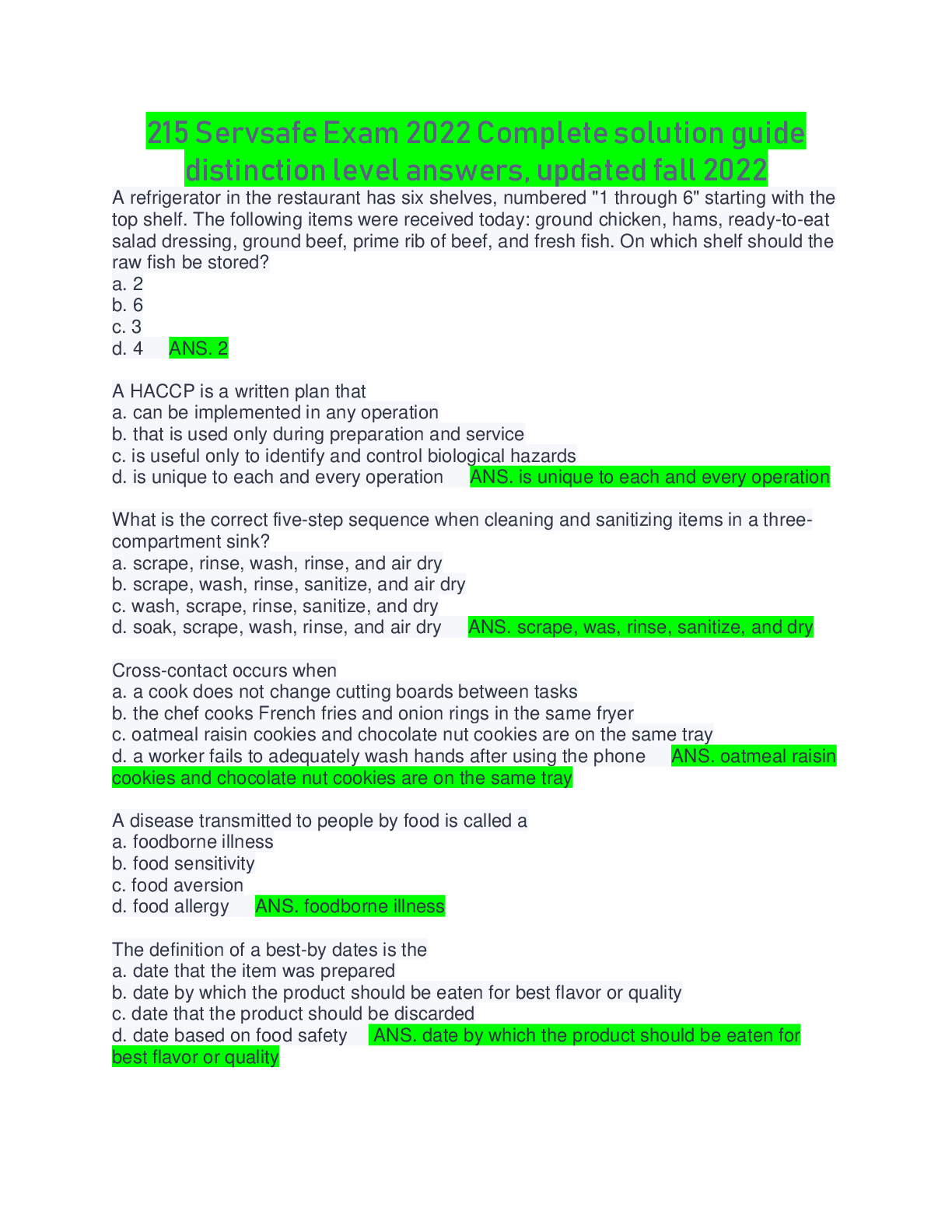
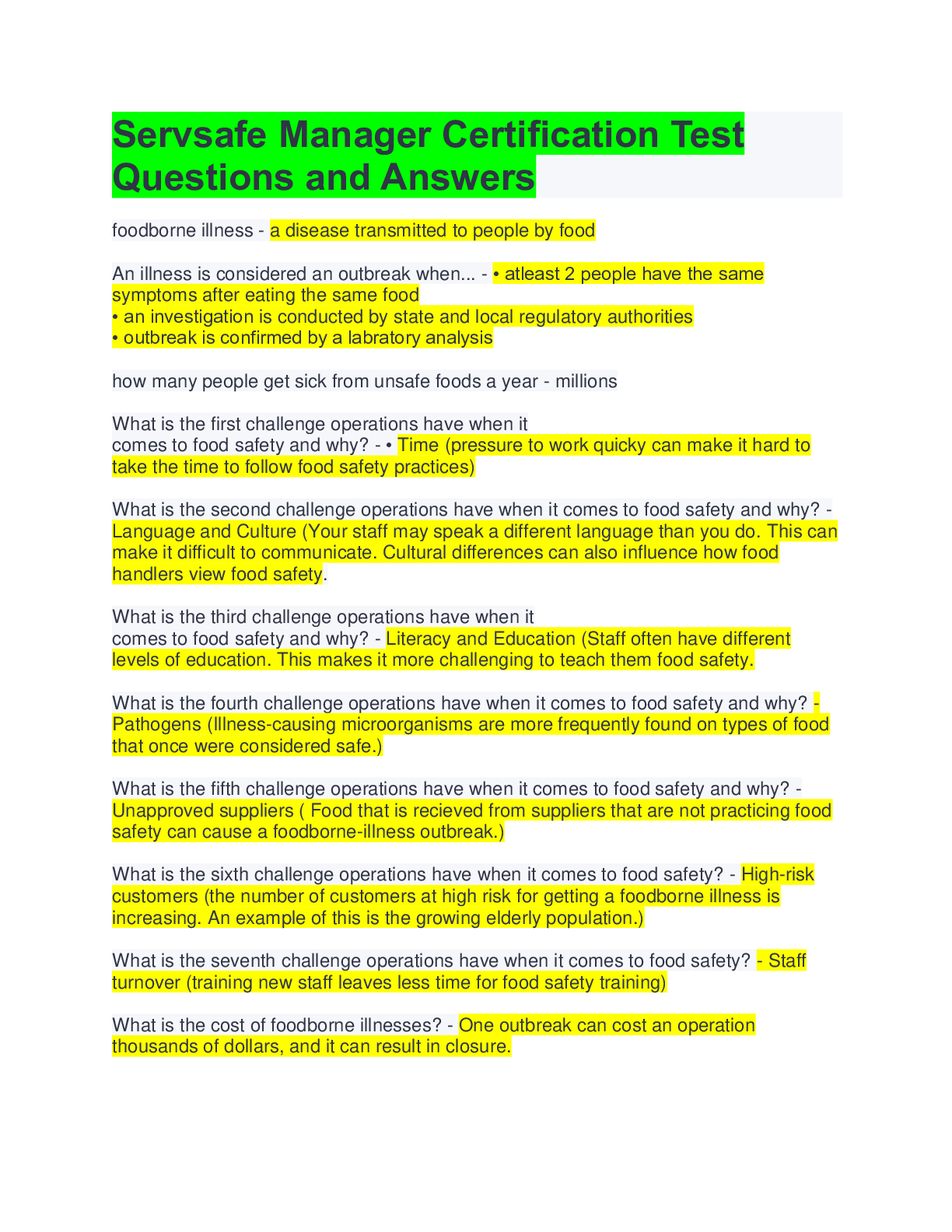
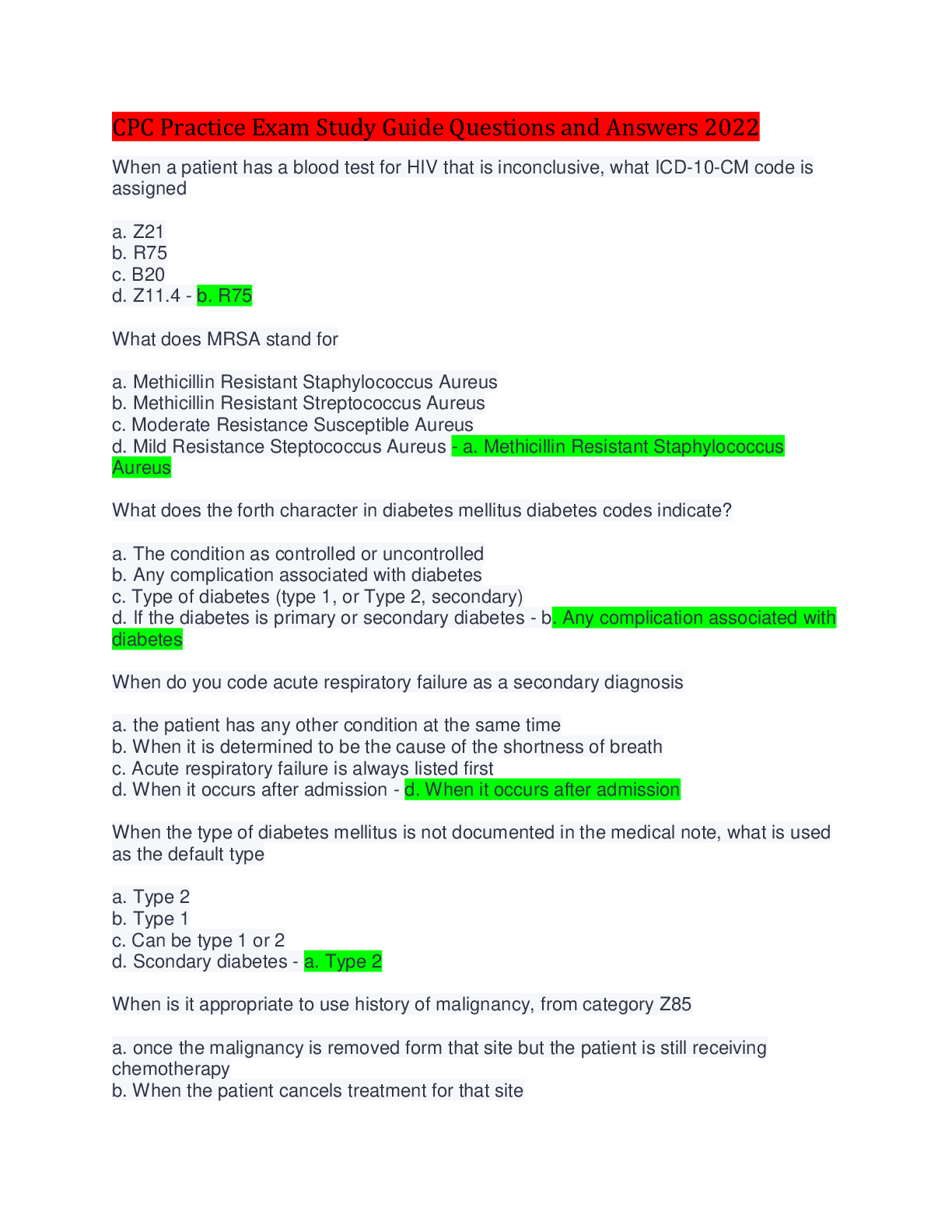
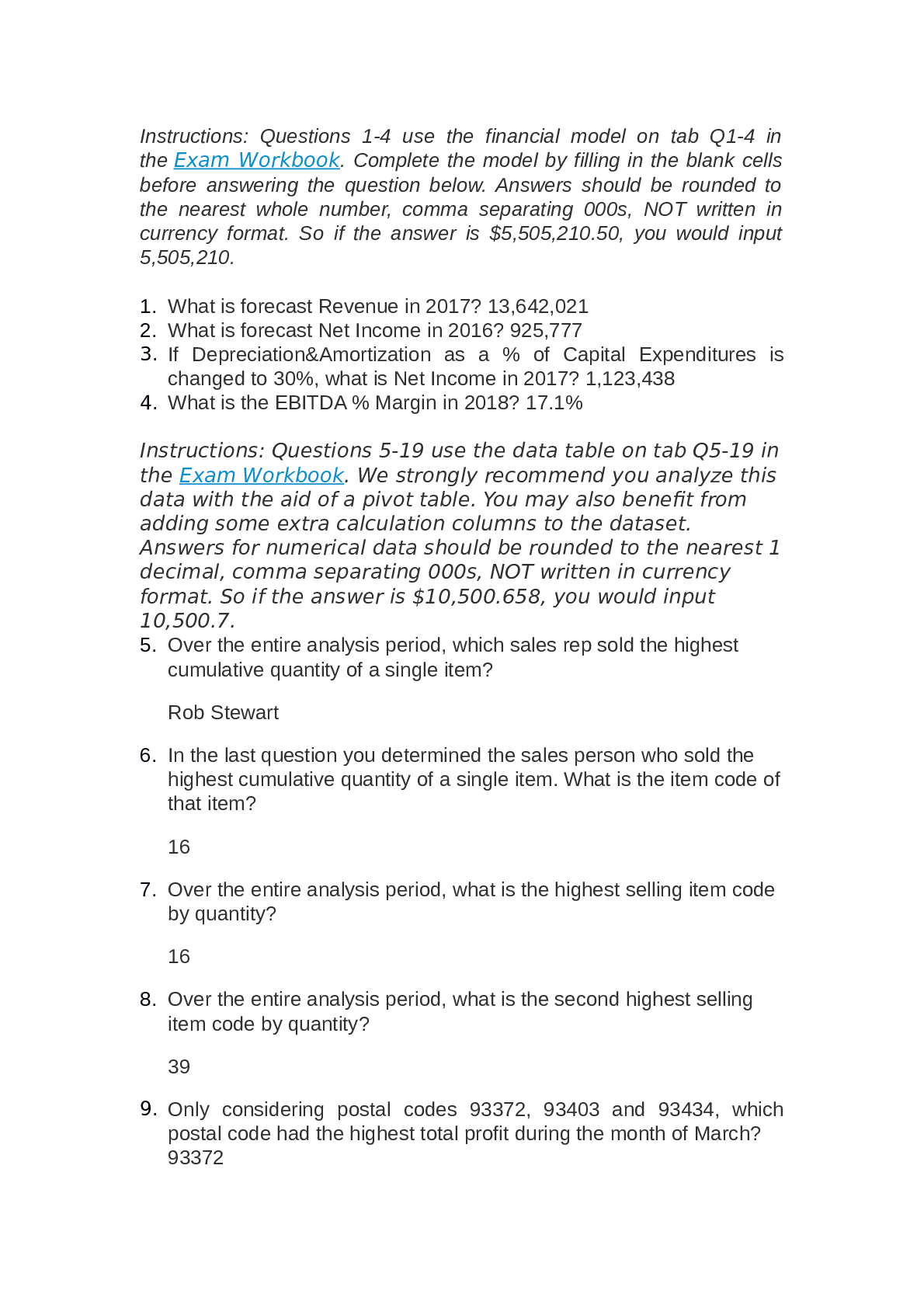
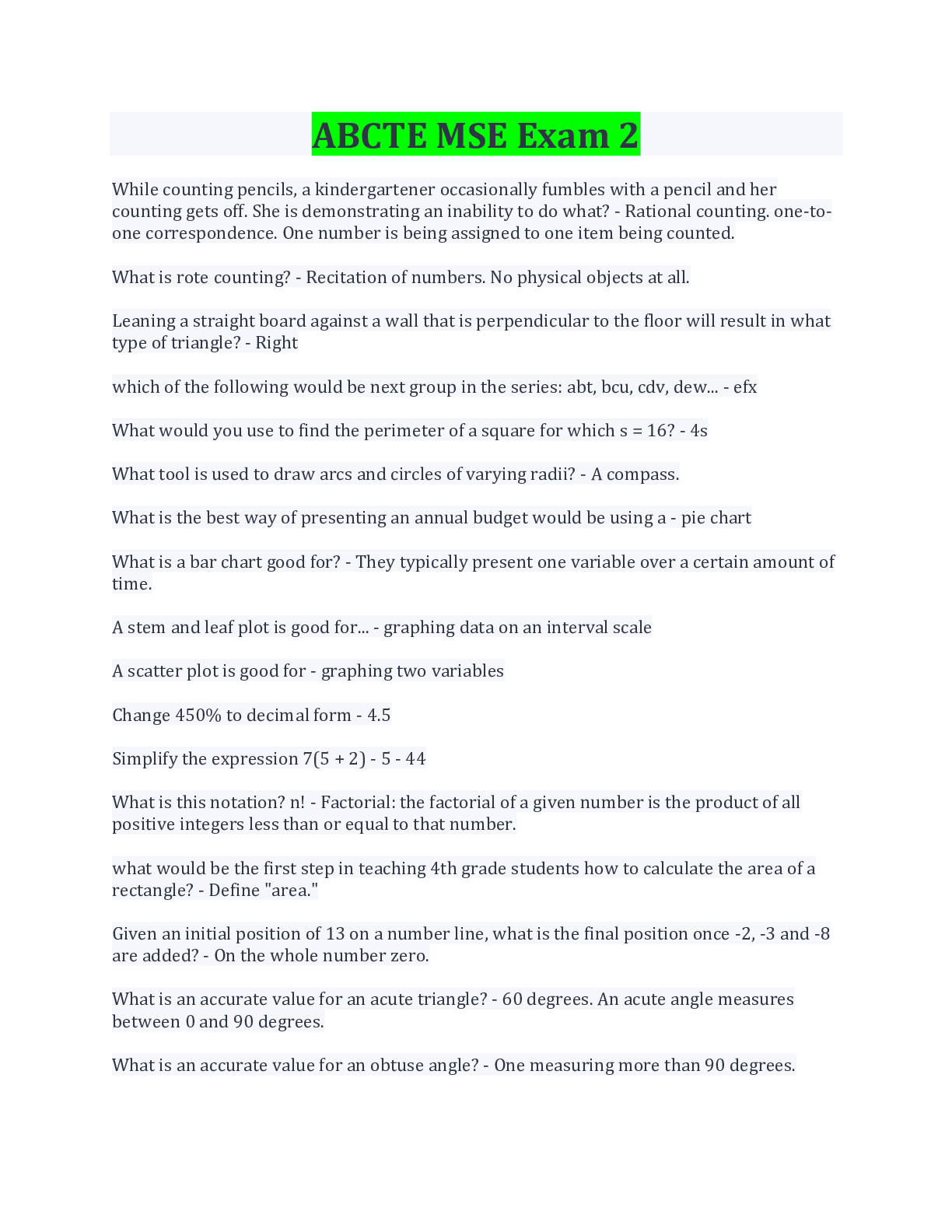
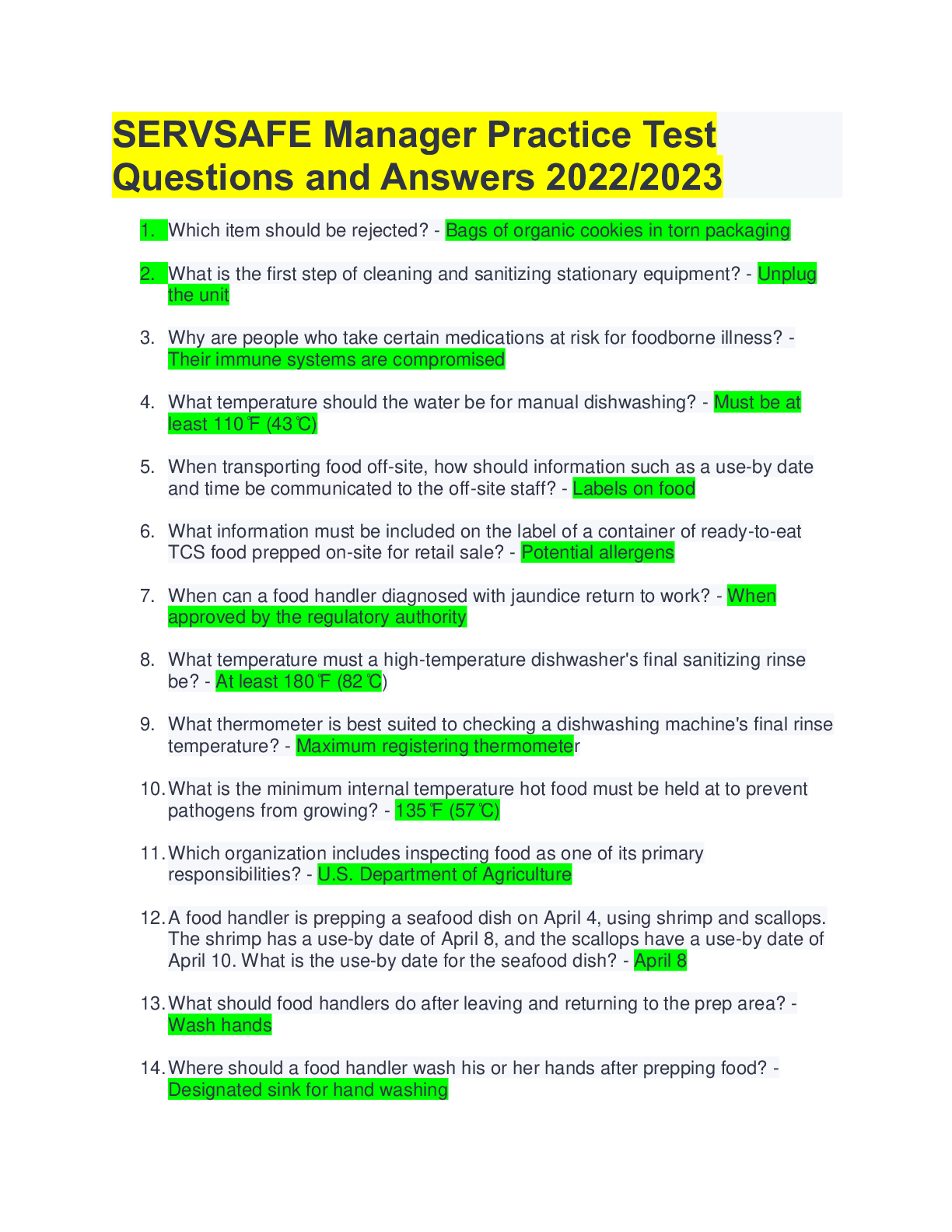

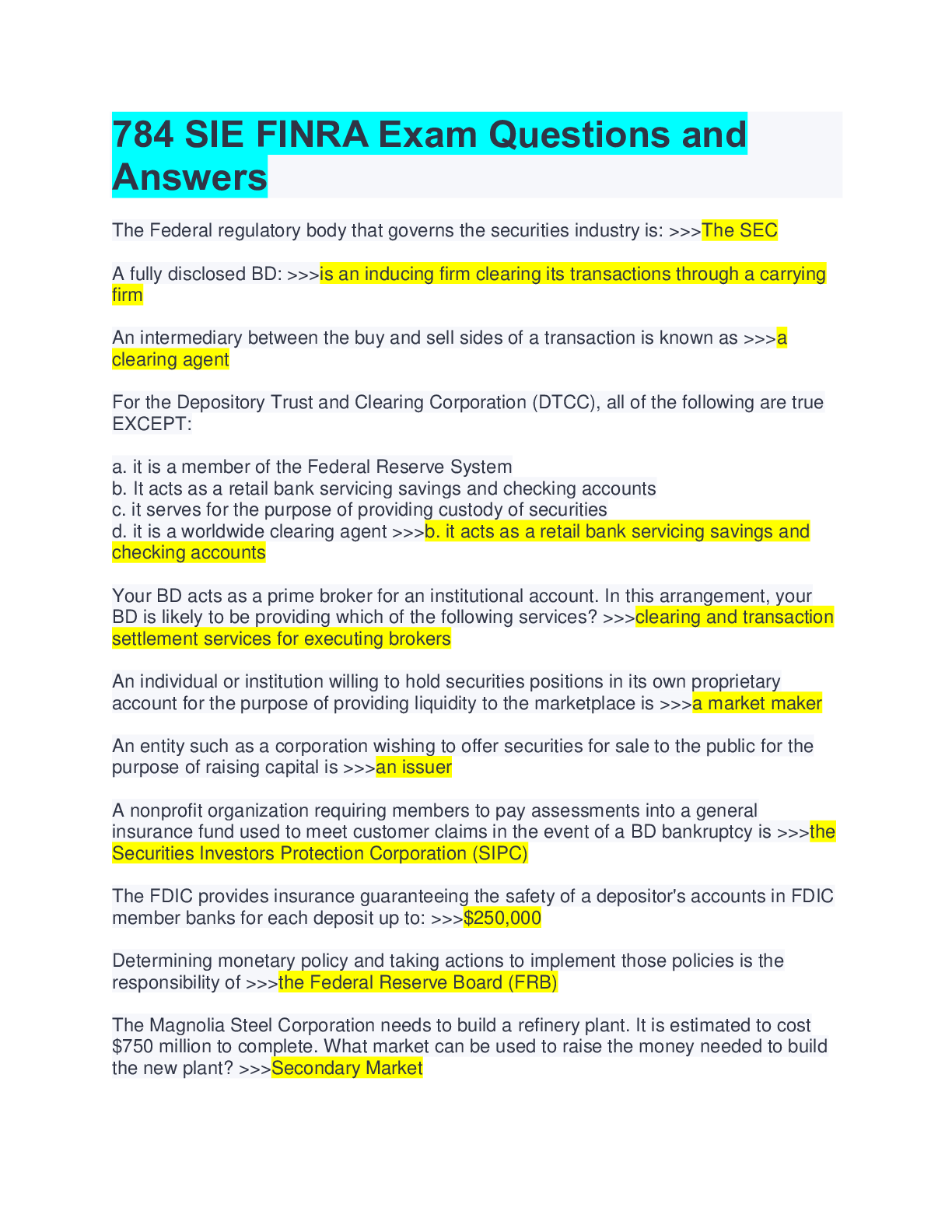
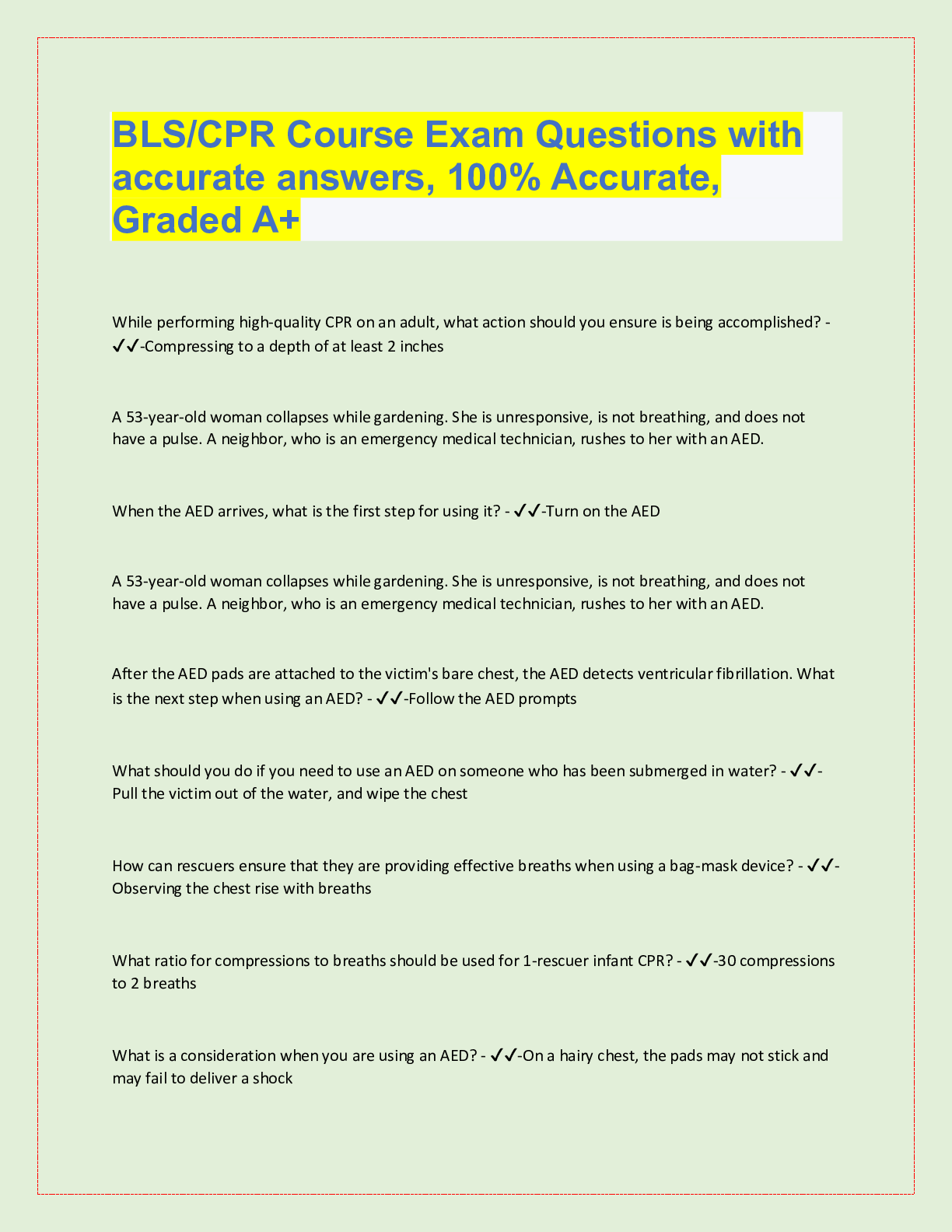
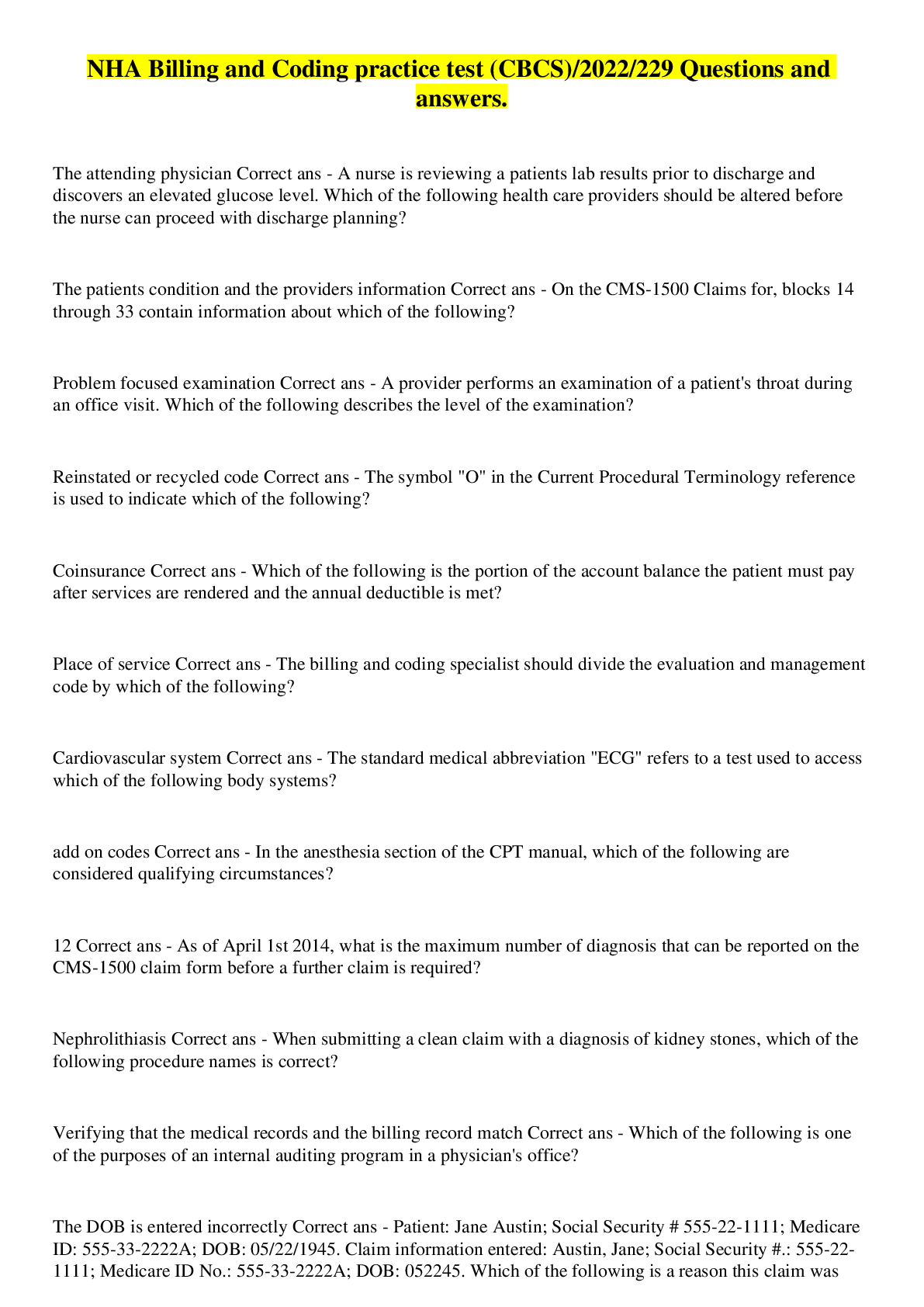
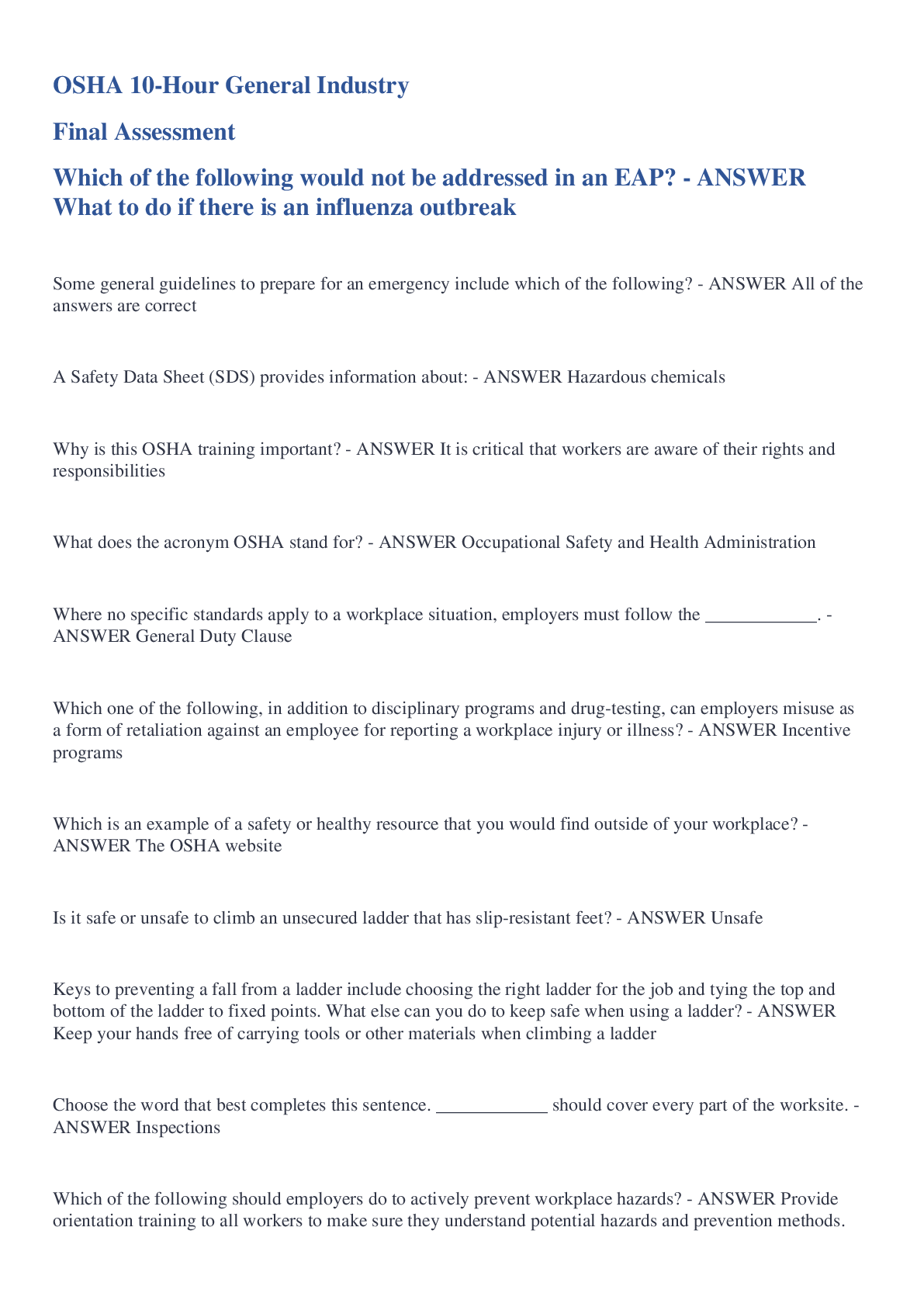

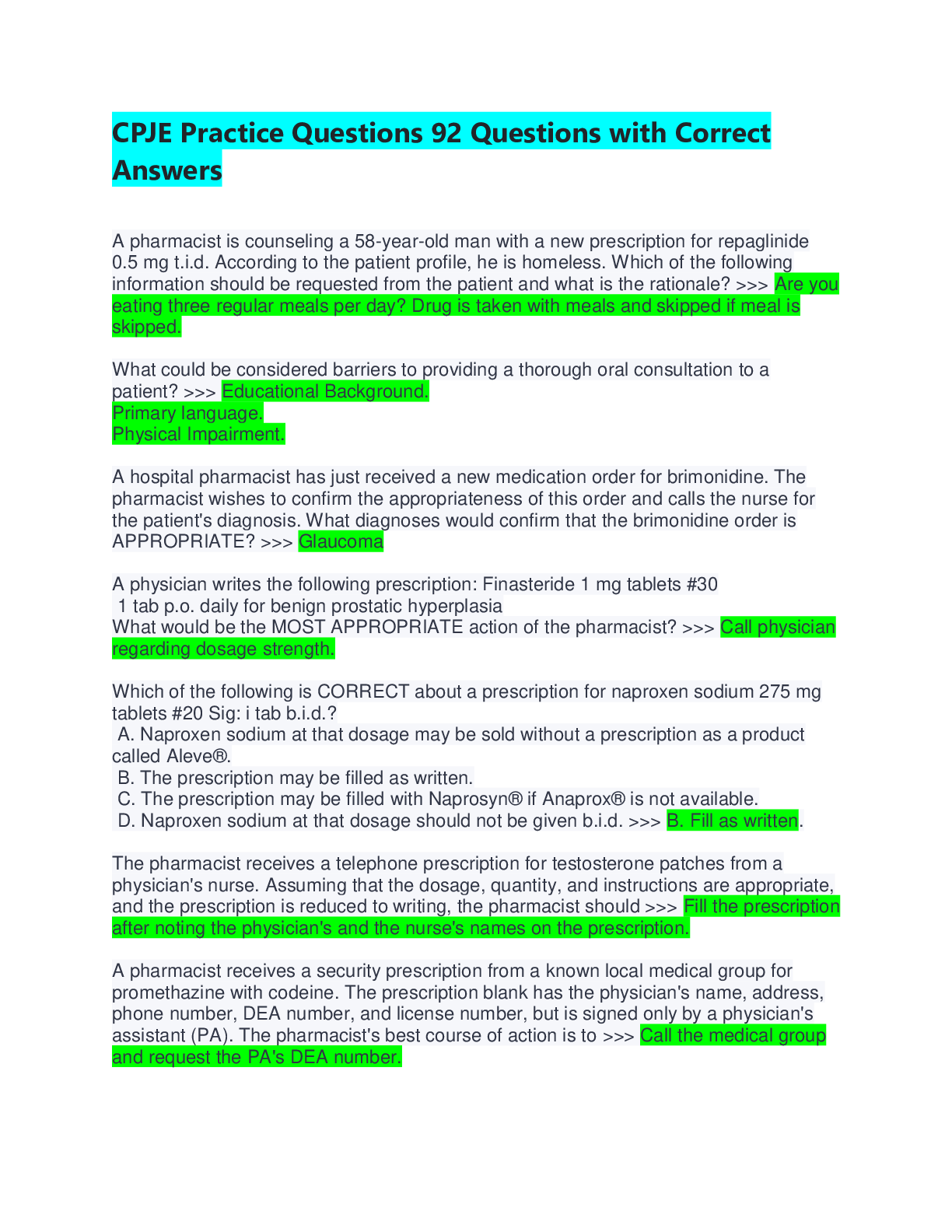
 (2).png)
.png)
.png)

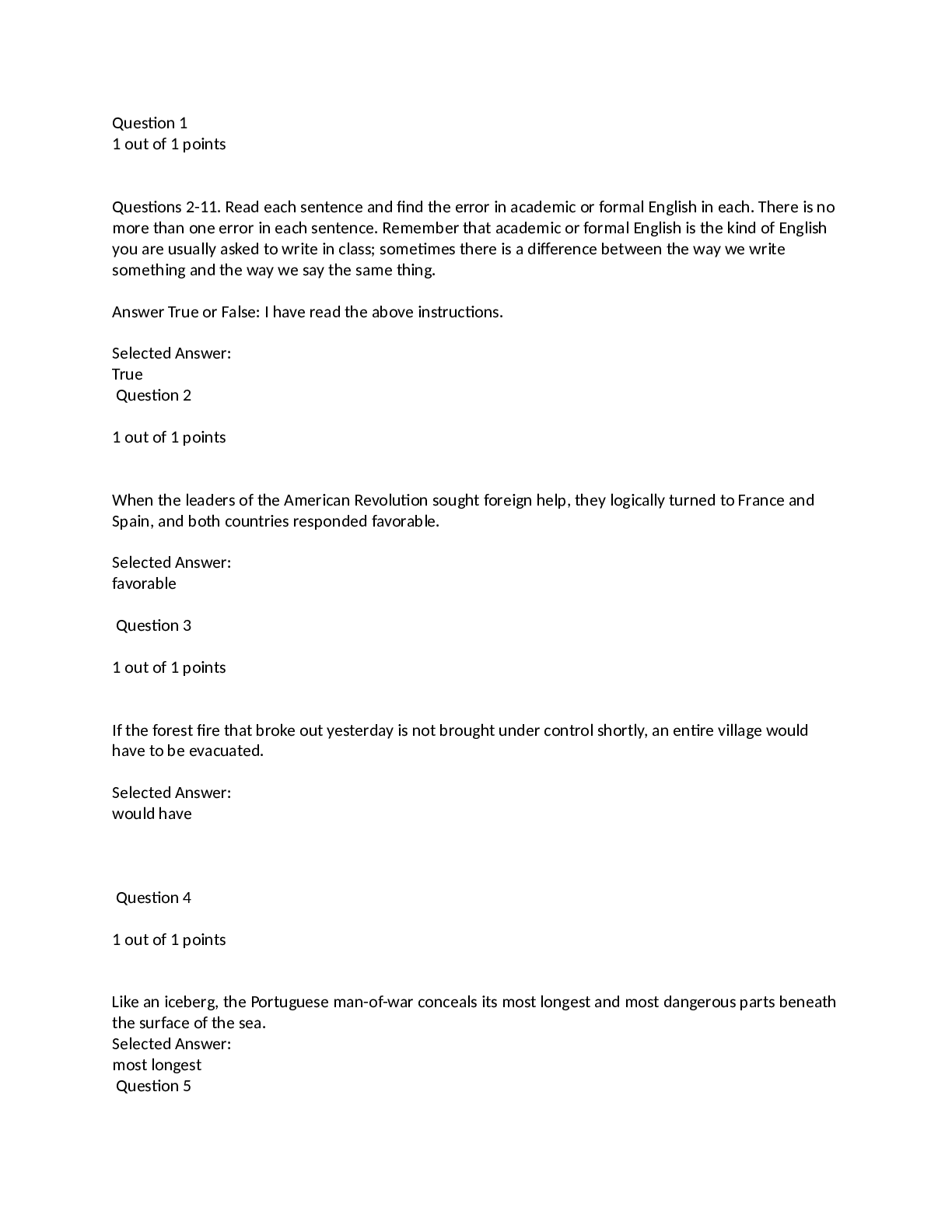
.png)
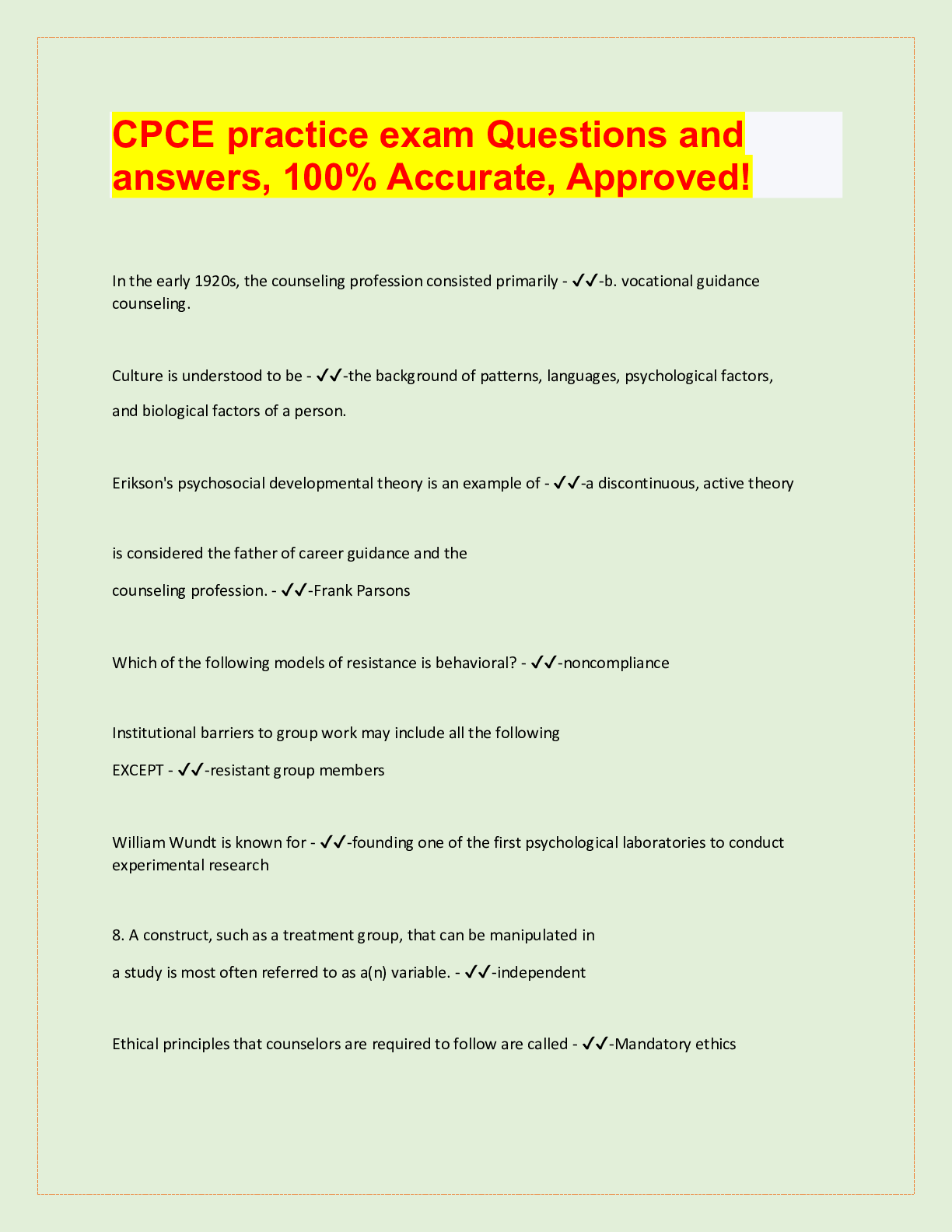
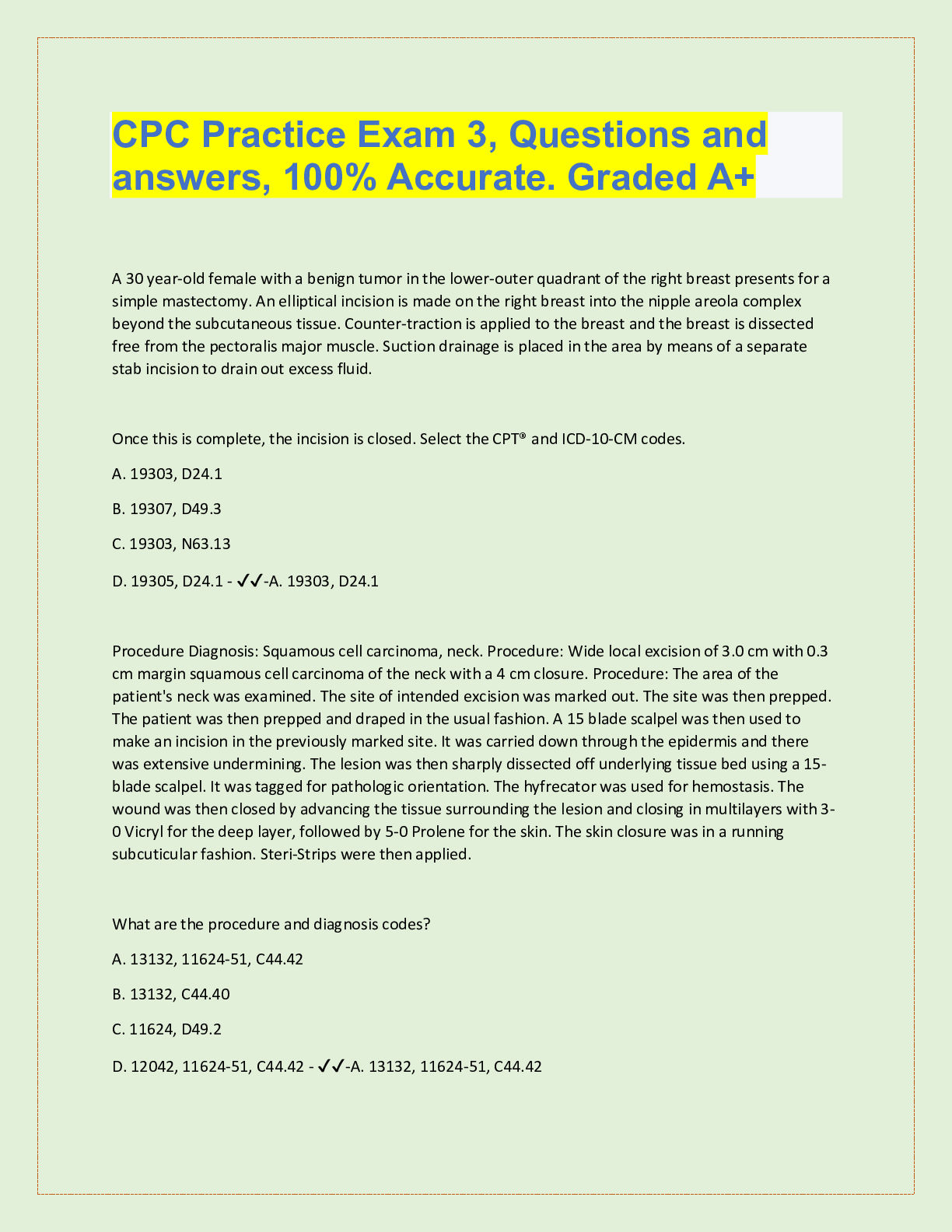
.png)


.png)


.png)

